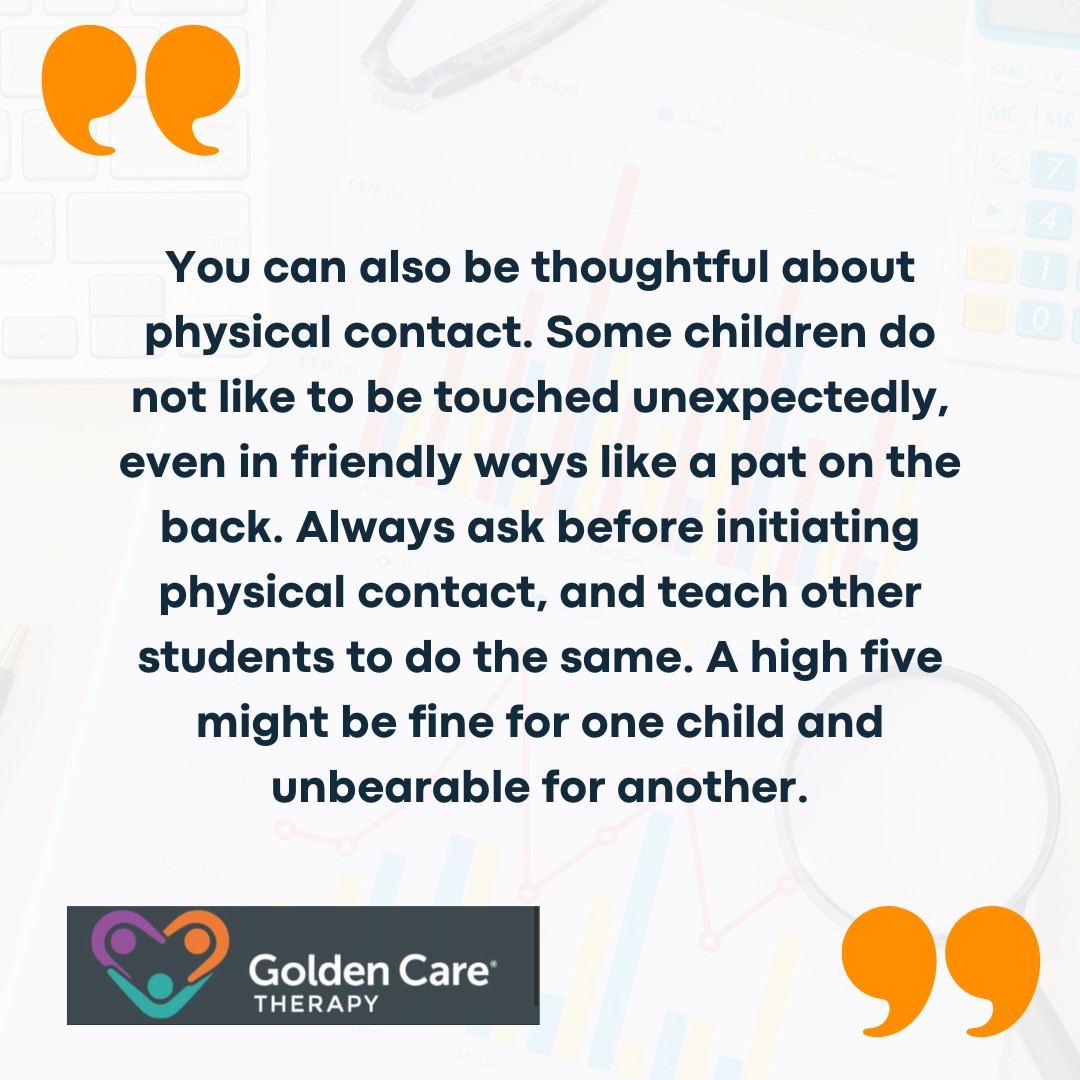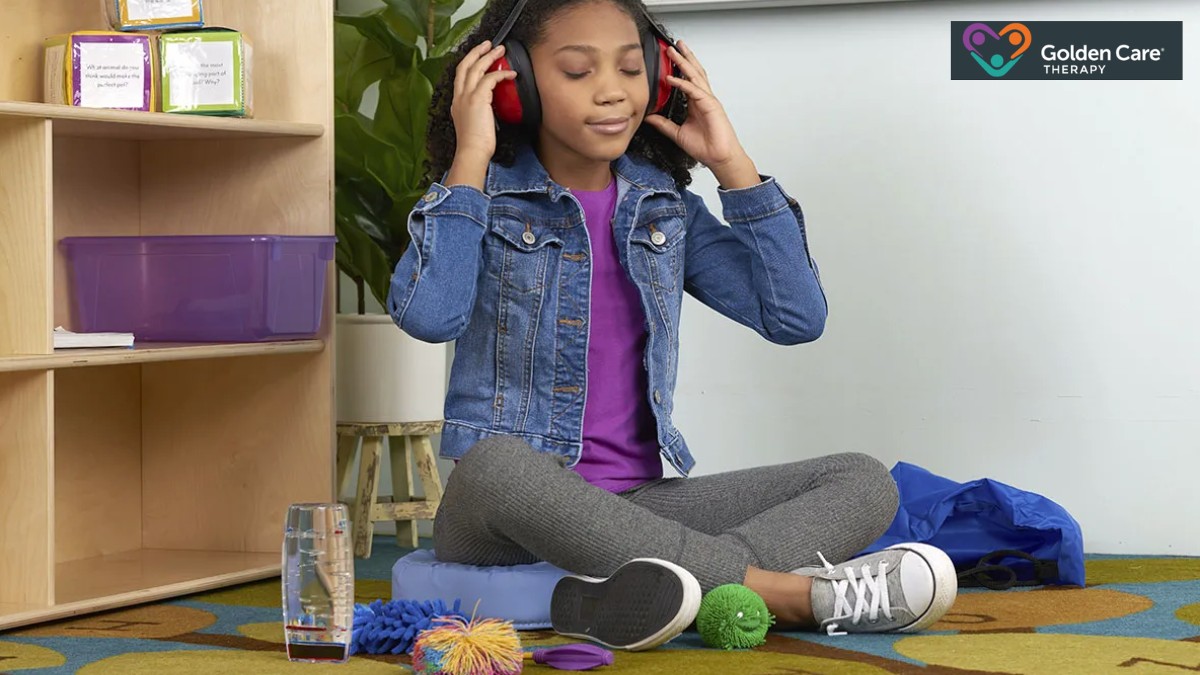Classrooms can be overwhelming places for any child, but for sensory-sensitive kids, the experience can be especially challenging. What might go unnoticed by one student can feel completely unmanageable to another. And when a child becomes overwhelmed by these sensory experiences, it can seriously interfere with their ability to learn, interact with peers, and participate in daily classroom routines.
As educators, caregivers, or parents, it’s important to create learning spaces that are welcoming and accessible to all students, including sensory-sensitive students. So, without further ado, here are five effective classroom tips that can make a meaningful difference in the lives of kids with sensory sensitivities.
Create a Calm and Predictable Environment
One of the most helpful things you can do for a sensory sensitive child is to provide a classroom environment that is calm, structured, and predictable. Children who are sensitive to sensory input often thrive in environments where they know what to expect.
To start, pay attention to the physical setup of your classroom. Avoid clutter and visual noise; overly decorated walls, bright lights, or chaotic bulletin boards can be overstimulating. Instead, aim for a simple, clean aesthetic that allows the child to focus on learning rather than trying to filter out distractions.
Use neutral or soft lighting whenever possible. If the room uses fluorescent lights, consider covering them with filters or using lamps instead.
Schedules also matter. A predictable routine helps a child mentally prepare for what’s coming next. Display the daily schedule using both words and visuals so children can refer to it as needed. When changes to the routine are unavoidable, prepare the child in advance using social stories, visuals, or verbal cues.
Make Noise Management a Priority
Classrooms can be noisy places. While some children can easily tune out these background sounds, sensory sensitive kids often can’t. For them, the buzz of a fluorescent light or the murmur of classmates might be just as distracting as someone talking directly to them.
Noise-canceling or noise-reducing headphones can offer immediate relief in many cases. Allowing children to wear these during especially noisy parts of the day can help them focus and stay regulated.
Another approach is to simply reduce the noise level whenever possible. Soft rugs, felt pads on the bottom of chairs, and acoustic panels can minimize echo and absorb sound.
You can also train students to become more aware of noise levels by introducing visual cues (like a traffic light chart) or using sound level monitors that show when the classroom is too loud.
If your class includes group discussions or centers, be mindful of how many noise-producing activities are happening at once. Strategically spreading out noisy and quiet activities helps create a calm environment for students who need it. For more insight on supporting sensory needs in autism, check out Why Deep Pressure Therapy is Effective for Autism Care, which explores techniques that promote calm and focus.
Provide Flexible Seating Options
For some children, sitting still in a traditional chair for long periods can be both physically and mentally uncomfortable. They may fidget, slump, or move constantly in an effort to self-regulate. Rather than punishing or reprimanding these behaviors, offering flexible seating options can make a big difference.
Some children benefit from alternative seating like wobble stools, yoga balls, or wiggle cushions, which allow for subtle movement. Others may prefer beanbags, floor seating with lap desks, or even standing desks.
The key is giving students the choice to find what works best for their bodies.
It’s also helpful to provide movement breaks throughout the day. Even just a few minutes of stretching, walking, or jumping jacks can help reset a child’s nervous system.
Be Mindful of Touch and Texture
Many sensory sensitive children have strong reactions to certain textures and physical sensations. Tags in clothing, seams in socks, or even the feeling of glue or paint on their hands can be uncomfortable or even intolerable.
In the classroom, try to avoid unnecessary tactile discomfort. Provide clothing-free or uniform options when possible, or allow children to wear comfortable alternatives like soft sweatshirts or tagless shirts.
If the child is sensitive to specific classroom materials (like glue, sand, or shaving cream used in sensory bins), offer alternatives that they are comfortable with, such as gloves or using tools instead of hands.

Use Visual Supports and Clear Instructions
For sensory sensitive children, especially those who also process language differently, too much verbal instruction can be overwhelming. When there’s a lot of background noise or other distractions, even simple spoken directions can get lost. That’s where visual supports come in.
Visual supports help make expectations clear and reduce anxiety. They give children something concrete to refer to, which can be especially grounding when they’re feeling overstimulated or unsure.
If you’re introducing a new task, break it down into small, manageable steps. Use visual instructions alongside your verbal explanation, and check in to make sure the child understands. Repetition and consistency also help build a sense of routine and confidence.
Visual timers can be especially useful during transitions or timed activities. For children who find change difficult, being able to see how much time is left before moving on to the next task can ease the stress.
Sand timers, countdown clocks, or apps that show a shrinking visual bar can all be effective tools.

Final Thoughts
While the challenges that sensory sensitive children face are real and sometimes complex, the solutions don’t have to be. With empathy, creativity, and a willingness to adapt, teachers and caregivers can transform the learning experience for children who need it most.
It starts with understanding, grows through small changes, and ultimately results in a classroom where every child feels safe, comfortable, and capable of doing their best. At Golden Care Therapy, we take pride in offering high-quality ABA therapy that truly supports each child’s unique learning journey.
Our team is committed to delivering compassionate, evidence-based care that helps children thrive both academically and socially. We provide personalized autism services in Georgia, New Jersey, Indiana, New York, and Florida to ensure families have access to the support they need, right where they are. If you’re ready to take the next step in supporting your child’s development, contact us today. Let’s work together to build a future full of possibilities.
Sources:



